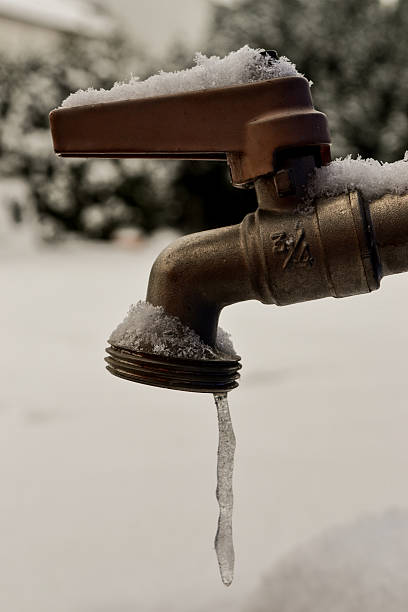Preventing Frozen Pipes: Effective Tips for Cold Weather
Preventing Frozen Pipes: Effective Tips for Cold Weather
Blog Article
They are making several great points regarding 6 Ways to Prevent Frozen Pipes overall in this article just below.

Cold weather can damage your plumbing, particularly by freezing pipes. Here's just how to stop it from occurring and what to do if it does.
Introduction
As temperatures decline, the danger of frozen pipes rises, possibly causing costly repairs and water damages. Recognizing exactly how to prevent icy pipes is crucial for house owners in cold environments.
Prevention Tips
Shielding prone pipes
Cover pipes in insulation sleeves or make use of warm tape to secure them from freezing temperature levels. Concentrate on pipelines in unheated or external areas of the home.
Heating techniques
Keep indoor areas adequately heated, especially areas with pipes. Open up closet doors to permit cozy air to flow around pipelines under sinks.
Exactly how to determine icy pipes
Try to find lowered water circulation from taps, uncommon odors or sounds from pipes, and noticeable frost on exposed pipelines.
Long-Term Solutions
Structural adjustments
Think about rerouting pipelines far from outside wall surfaces or unheated locations. Include added insulation to attic rooms, cellars, and crawl spaces.
Updating insulation
Purchase high-grade insulation for pipelines, attic rooms, and walls. Appropriate insulation helps keep constant temperatures and decreases the risk of icy pipes.
Protecting Outdoor Pipes
Garden hoses and exterior faucets
Detach and drain yard pipes before winter months. Set up frost-proof faucets or cover outside taps with protected caps.
Recognizing Icy Pipes
What triggers pipelines to freeze?
Pipes ice up when revealed to temperatures below 32 ° F (0 ° C) for expanded durations. As water inside the pipes ices up, it expands, putting pressure on the pipeline walls and possibly creating them to break.
Threats and damages
Frozen pipes can cause water supply interruptions, property damage, and expensive fixings. Ruptured pipelines can flooding homes and trigger substantial architectural damages.
Indications of Frozen Pipeline
Identifying frozen pipelines early can stop them from rupturing.
What to Do If Your Pipelines Freeze
Immediate actions to take
If you presume icy pipes, keep taps available to ease pressure as the ice thaws. Utilize a hairdryer or towels soaked in warm water to thaw pipes slowly.
Conclusion
Preventing icy pipes requires aggressive steps and fast responses. By recognizing the causes, indications, and safety nets, house owners can shield their plumbing throughout winter.
5 Ways to Prevent Frozen Pipes
Drain Outdoor Faucets and Disconnect Hoses
First, close the shut-off valve that controls the flow of water in the pipe to your outdoor faucet. Then, head outside to disconnect and drain your hose and open the outdoor faucet to allow the water to completely drain out of the line. Turn off the faucet when done. Finally, head back to the shut-off valve and drain the remaining water inside the pipe into a bucket or container. Additionally, if you have a home irrigation system, you should consider hiring an expert to clear the system of water each year.
Insulate Pipes
One of the best and most cost-effective methods for preventing frozen water pipes is to wrap your pipes with insulation. This is especially important for areas in your home that aren’t exposed to heat, such as an attic. We suggest using foam sleeves, which can typically be found at your local hardware store.
Keep Heat Running at 65
Your pipes are located inside your walls, and the temperature there is much colder than the rest of the house. To prevent your pipes from freezing, The Insurance Information Institute suggests that you keep your home heated to at least 65 degrees, even when traveling. You may want to invest in smart devices that can keep an eye on the temperature in your home while you’re away.
Leave Water Dripping
Moving water — even a small trickle — can prevent ice from forming inside your pipes. When freezing temps are imminent, start a drip of water from all faucets that serve exposed pipes. Leaving a few faucets running will also help relieve pressure inside the pipes and help prevent a rupture if the water inside freezes.
Open Cupboard Doors
Warm your kitchen and bathroom pipes by opening cupboards and vanities. You should also leave your interior doors ajar to help warm air circulate evenly throughout your home.

We had been introduced to that report about How To Avoid Freezing Pipes from an acquaintance on our other domain. Do you know another individual who is in to the subject? Why not share it. We love reading our article about 6 Ways to Prevent Frozen Pipes.
Set An Appointment Report this page